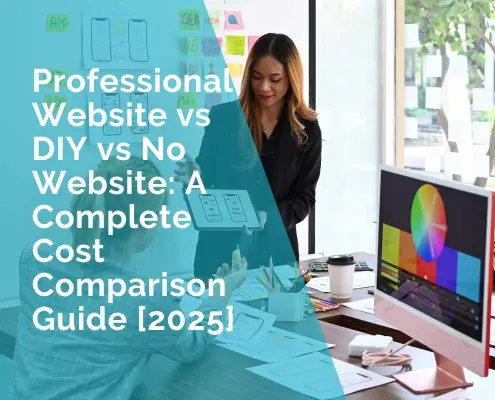Maximizing Impact: How Cropping Your Photos Can Tell a Better Story
Photography is a vast and rapidly changing field where an image is more than just a picture: it tells a story, displaying emotions, and is sometimes immortal art. Every photographer, regardless of experience and skill, has an exceptional invention that can bring life to any still photo – cropping. Therefore, the blog post will tease readers’ minds and share an idea of how important cropping is to photography: literally, everything could be altered.
Unveiling the Power of Cropping
Cropping is not merely about resizing images but about reimagining and refining them. Cropping is an attempt to remove all the detours from the photo and strengthen it with the story, the idea, the emotions. At its core, cropping is a silent storyteller, subtly but significantly altering what the image communicates. An ‘average’ photo, with judicious cropping, can metamorphose into an enthralling tale, inviting the viewer to delve deeper into the visual narrative.
Rule of Thirds in Cropping
Another essential rule of composition, the Rule of Thirds represents an image as divided into nine equal parts using two equally spaced horizontal and vertical lines. It teaches that the subject of study, or the most important parts of the composition, must be placed along these lines or their points of intersection. When applied to the process of cropping, it has the power to make an image seem far more dynamic and eye-catching. By properly centering the frame, the photographer is changing the perspective, meaning, and overall effect of the picture, often making it so that the eye of the viewer naturally falls on the desired point of focus.
Aspect Ratio and Cropping
Aspect ratio – the ratio between the width and height of an image – defines the way each photo is perceived and where its placement in media is intended. Each ratio is suitable for different types of feelings and stories, such as a square 1:1, the best choice for posting in social media like Instagram, widest options like 16:9, the perfect choice to represent landscape and panoramic views in general. Progressing the aspect ratio edit photographers make sure that the position they captured fits naturally and demonstrates the story they wish to tell.
Quality Concerns when Cropping
However, there are also the “buts” of cropping . Firstly, it is the quality of the image, or rather, its gradual decrease. When the crop is done too much, the image will lose its edges, its contours will become blurry, or even the grains of the image will lose. Like any manipulation with photos, cropping should be reasonable and appropriate to the target task. Hence, one of the ways to preserve the quality of the image from such distortion is always to edit photos previously with the maximum possible resolution.
Cropping and Photo Composition
For a striking photograph, good composition is critical, and cropping is a top method to accomplish just that. Cropping enables one to eliminate out-of-place elements, re-adjust the framing, or alter one’s point of view in ways that handle the behaviors of one’s audience in the exact manner that is intended. Particularly, cropping compels a photographer to do more intentional composing and accepts his inventiveness on a journey-to-maturity of the image-vision and tale.
Identifying and Highlighting the Subject
When it comes to photography, the subject is always in the photo’s centre. Cropping enables photographers to zoom on the subject, displace it from the background, and erase or erase the unwanted aspects that could spoil the picture. Focusing on the subject matter in this way can help draw the viewer’s eye in closer, forging a practically instant connection that will allow it to stand out in a way that directly conveys the message being relayed.
Creative Cropping Techniques
But aside from its utilitarianism, cropping is a wide playground for creativity. It allows for the modification of lines, polygons, and points of view, helping a regular photo turn into something absolutely mind-blowing and surreal. A limited frame can take the audience inside the image; the unusual proportion might intrigue optically and evoking one more shot. It can therefore enrich narrative bursting out in an unexpected and cutting-edge manner.
Online Photo Cropper Tools
The cropping technique has never been more abundant since the rise of digital photography and the plethora of online tools that have emerged to make it easier, unlike anything before. Whether you are looking for a simple image cropper or advanced composition and framing solutions, Watermark is a perfect place for the user to adjust the crop till the effect is mastered. In addition to simplifying the process of cropping, each of the tools described above also features strong capabilities to ensure the image with the original format and quality remains available for any platform or publication.
Conclusion
Although cropping can enhance the storytelling capabilities of your photographs, some common pitfalls can undermine its efficiency. Cropping can be too close to your subject, poorly balanced, or not aligned with the natural lines and flow of your photograph. An essential part of the learning curve is identifying and avoiding these pitfalls.
Learning how to crop photos to achieve all these goals takes time and dedication to practice. To be a photo-cropping master requires being patient and developing an eye for the smallest of details in every shot. When done thoughtfully and with the viewer in mind, cropping can expose layers of story to viewers that they never would have been able to see otherwise. Cropping isn’t just about what you cut out; it’s about what you emphasize and what you include, as well as how you make the viewer a part of the story. As you become more skilled with cropping, you’ll be able to convey even stronger visual tales – one photograph at a time.
***
BM












